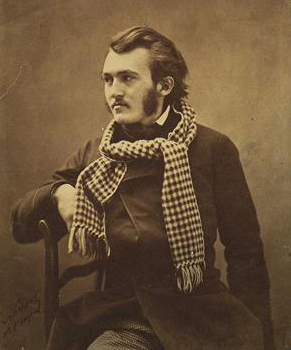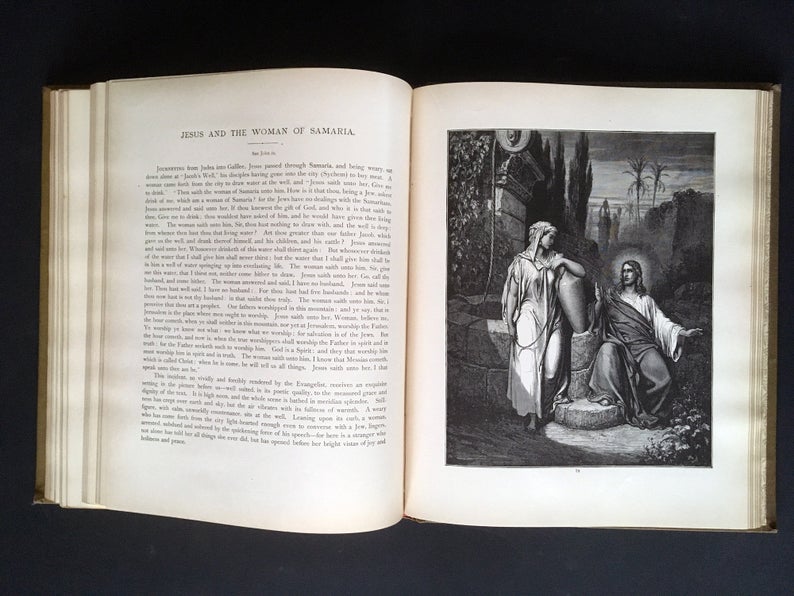Drive up to any museum at mid morning or early afternoon, and you will probably see a collection of school buses parked outside. Inside, you will encounter the energy and curiosity of the schoolchildren these buses carried to the museum. As they marvel at dinosaur bones, pore over ancient Egyptian sarcophagi, or stand inquisitively in front of a Jackson Pollock painting, many are undergoing a powerful experience they will remember for many years to come. (Besides, who doesn’t love a day away from school for a field trip?)
Museums are a significant resource for schools of every type. The American Alliance of Museums reported in recent years that “Museums receive approximately 55 million visits each year from students in school groups.” Spread out over thousands of museums, the student attendance for each will vary a great deal depending on its size and popularity. For many, that number is quite large: the Detroit Institute of Arts estimated that over 70,000 students per year visit on field trips. That’s a lot of kids—and a lot of memories!
As educational institutions themselves, museums recognize that they are ideal places for students to spend a day away from school, and therefore prioritize the need to serve these visitors. “Museums spend over $2 billion each year on education activities; the typical museum devotes three-quarters of its education budget to K-12 students,” the American Alliance of Museums calculated.
What is it, specifically, that makes museums such ideal destinations for teachers to bring their students? Museum Director Rebecca Shulman explores a few reasons in her article, “Why Should Schools Visit Museums?”:
- Museums teach critical thinking, empathy, and other generally important skills and dispositions.
- Trips to museums help get kids excited about school subjects.
- Museums teach subject-specific content and skills.
- Museums expand the general world knowledge of students.
- Museum visits increase students’ cultural capital; in turn, school groups help museums reach non-traditional museum goers.
In short, museums effectively supplement just about everything teachers are already trying to do in their classrooms.
We should not, however, make the mistake of thinking that a great experience at the museum is the only ingredient of a successful field trip, as important as it may be. Ms. Shulman goes on to explain that “research demonstrates that field trips are more effective when teachers make connections before and after the visit.”
How, then, do museums help teachers make these connections in preparation for the field trip and afterwards? By far, the best way is to develop an effective educator resource area on the museum’s website.
Educator Content: The Two Biggest Challenges
Educators love free high-quality teaching resources, and when they discover that a museum offers lesson plans, videos, and other study resources, many are excited and eager to use them in the classroom, especially (but not always) in conjunction with a field trip.
For museums, this can be a great opportunity but also a great challenge. The challenge is twofold, for museums must (1) produce and (2) organize educator resources in a way that will be more helpful and user-friendly for teachers as they browse the website. This is, in a sense, a digital version of the same physical challenge a museum already faces in (1) acquiring a good collection and (2) displaying it in a physical setting that makes sense for visitors.
So just how do some of the best museum websites manage excellent educator resources? In this series of two articles, we will begin with the second challenge and get an overview of how these resources are organized. This will also provide an overview of the types of information and resources available. Then, we will turn to the content itself to examine strong lesson plans and other materials that other museums might imitate.
Organizing Educator Content
We all know busy and overworked teachers tend to be, which means finding the resources they need on a museum’s website should not be a difficult scavenger hunt. Starting on the homepage, educator content must be well organized and easy to find. Unfortunately, it is not uncommon for sites to unintentionally bury educator resources in a manner that makes them difficult to get to. One museum site, for instance, requires visitors looking for lesson plans to click a long series of links (not all of which are very intuitive) to get there: “Learn” 🡪 “Programs” 🡪 “For Students and Teachers” 🡪 “For Teachers” 🡪 “Classroom Resources” and finally, “Grade-Level Curricula.” Some teachers probably leave this site without even realizing it had lesson plans they could have used!
There is a better way to organize educator content. In this article we will explore examples of how to organize content more effectively and intuitively, using four excellent examples for reference: (1) The Detroit Institute of Arts, (2) The North Carolina Museum of Art, (3) The National WWII Museum, and (4) The 9/11 Memorial & Museum.
The Homepage & Main Menu
The first question is how to fit educator resources into the most general links on the homepage’s main menu. “Education” and “Learn” are the most common and user-friendly choices. Other sites require visitors to scroll down to the bottom or to click a “hamburger button” to find these links, while still others place them under “Resources” or the much less obvious “Programs.”
As we have previously described in “The Art of Classifying Museum Website Content,” organizing pages into categories and subcategories can be tricky business. While “Education” and “Teachers & Students” are unambiguous, ambivalent words like “Learn” and “Explore” are umbrella terms that could potentially include much more content than a label like “Educators.” The decision of which term to use may depend on what content needs to go under it. “Learn” could be too broad for a section purely designated for teachers. On the other hand, as seen below, the 9/11 Memorial & Museum uses the “Learn” as a category because it includes a broader range of subcategories, including “Upcoming Public Programs,” “Students and Teachers,” “Youth and Families,” and “Resources.”
The four sites we are examining in this article use the following menu links, all of which are instantly recognizable as relevant for educators:
(1) Detroit Institute of Arts – “Education”
(2) North Carolina Museum of Art – “Education”
(3) The National WWII Museum – “Students & Teachers”
(4) The 9/11 Memorial & Museum – “Learn”




The next decision is whether and how to display a submenu when a user clicks or hovers over a main menu link. Many museum websites use mega menus, which have pragmatic and stylistic advantages that we previously described in “Museums and Mega Menus”:
Most website menus offer dropdown selections from each main menu header. But using a mega menu allows you to more robustly emphasize, organize, and prioritize content. Instead of simply listing subpages, a mega menu allows you to group and display subpages in ways that reflect their relative importance.
A well designed mega menu offers viewers an opportunity to survey the breadth of your content before they begin to click and explore your pages. Mega menus provide context to submenus, calling out featured content from more utilitarian links. They can include images, they can be broken into sections, and even display dynamic content such as upcoming exhibitions, and featured posts and featured events.
Of our four sites, three use mega menus and one uses a regular dropdown menu:




Putting Education Content on a Mini Site
Before examining the basic categories of educator content, we should pause to note that some museums have found it helpful to create a separate mini site for educator content. The North Carolina Museum of Art, for instance, features a link on the Education menu which takes visitors to NCMALearn, a subdomain of ncartmuseum.org located at learn.ncartmuseum.org. The advantage of building a mini site is that its formatting and structure may be customized to make the content more user-friendly for teachers and students. Other examples include the Nasher Museum’s Words & Pictures and the Henry Ford Museum’s very elaborate inHub. The more educator content a museum has to offer, the more convenient it may be to put it on a mini site.
Basic Categories of Educator Content
Wherever a museum chooses to include in its educator resources, most museums include similar basic categories of content and information that should be easy to find very quickly on the main menu. Three of the most important include:
- Information on Field Trips: How to schedule a tour, types of tours to choose from, guidelines for visits, etc. (Many museums also now feature “virtual field trips,” which sometimes are and sometimes are not tours of the museum itself.)
- Resources: Links to classroom resources like lesson plans, videos, etc.
- Professional Development Opportunities: Information on teacher workshops, forms for joining mailing lists, special educator events, etc.
Other links will differ from museum to museum depending on available content, virtual and in-person events, and other aspects of museum life that may be important to emphasize. Returning to our four example sites, while all include the three categories listed above, each also emphasizes others, including:
- Detroit Institute of Arts
- Free Educator Pass
- Teen Arts Council
- “Behind the Scene” Community Lectures
- North Carolina Museum of Art
- Online Courses
- Teacher Tuesdays
- National WWII Museum
- Distance Learning
- Student Travel
- ASU Partnership (online degrees & continuing education)
- 9/11 Memorial & Museum
- Virtual School Programs
- Webinars
The Importance of Wording
While the examples we have seen have tended toward more minimalistic wording (“Professional Development,” “Resources,” etc.), others prefer more descriptive terms. The Art Institute of Chicago, for instance, features a menu titled “Learn with us”; follow the “Educators link,” and you will find four main categories: (1) “Visit with my students,” (2) “Tools for my teaching,” (3) “Learn with my peers,” and (4) “Visit on my own.” The more personalized tone has a nice effect, but the trade-off is that the phrases take up more space—an issue that the museum was likely thinking of when it placed this menu in the footer rather than the header.
Navigating Lesson Plans & Other Resources
So far we have looked at the basic types of links relevant to educators. We now turn to materials like lesson plans which can be used in the classroom. For many museums, these materials are extensive and require careful organization if educators are going to be able to find what they are looking for.
A small museum with only a handful of teaching resources may find it most effective to simply list them out on a page or two. A museum with dozens or hundreds of videos, articles, and lesson plans, on the other hand, must think more deeply about organizing and categorizing content.
Here is how our four sites organize this content:
Detroit Institute of Arts
The “Learning Resources” page at the Detroit Institute of Arts displays, by default, all 49 items in its database. To the right, users can search by keyword or phrase, or filter results by checking boxes relating to subject matter (history, science, etc.), audience (grade level), or resource type (multimedia, self-guide materials, special exhibitions, or lesson plans). Upon clicking into a resource, users can view the ways it is categorized, including keywords like STEAM, project-based learning, ELA, writing, and many more. “Related Resources” and “Popular Resources” are automatically generated on the right under the search interface, which remains on each resource page.

North Carolina Museum of Art
While the Detroit Institute of Arts includes a few dozen resources, the North Carolina Museum of Art features hundreds, making a more elaborate browsing and search system helpful. It is also, as noted previously, built on a separate mini site, allowing customized formatting and search options.
The site is constructed around a top menu includes links to “Art,” “Videos,” “Lesson Plans,” “Resources,” and “Programs,” each including more detailed submenus. Clicking into any of these reveals a list of resources, as well as search and filter options which differ by resource type:



National WWII Museum

https://www.ww2classroom.org/search
The National WWII Museum keeps its primary set of educator resources, “From the Collection to the Classroom,” on a separate site, ww2classroom.org. (The museum also maintains other education-related sites, including ww2yearbooks.org and getinthescrap.org.)
The site structure divides curriculum guides according to five main subjects: (1) War in Pacific, (2) War in Europe, (3) The Home Front, (4) Real World Science, and (5) Liberation & Legacy.
A search bar and drop-down menus at the top allows users to quickly find a resource. Lesson plans may also be filtered according to subject and media.
To access these resources, users must register to create a free account and log in. While this can be inconvenient for some, the advantage is that each resource features an “Add to My Classroom” link that allows it to be added to a list that can be easily found at a later time.
9/11 Memorial & Museum
Of our four sites, the 9/11 Memorial & Museum includes the fewest number of resources and therefore keeps things simple. It features a basic interface with search and dropdown options.

Takeaways
Some museums are so intentional about making their materials accessible that they have created videos explaining how to make the best use of the site (see, for instance, the Henry Ford Museum’s “What is inHub?” video and the Art Institute of Chicago’s “Intro to Resources” video). This kind of instructional video is really only needed for a museum that has a vast and elaborate collection of resources—but regardless of a museum’s size, and whether it offers six lesson plans or six hundred, the goal is the same: to provide teachers and students with some of the best of what the museum has to offer, and to make sure it is organized in a way that helps them discover exactly what they need. Now that we have seen how educator content can be successfully organized, we can turn to the content itself and ask, What do effective education resources look like? This is a question we will address in a follow-up article.










